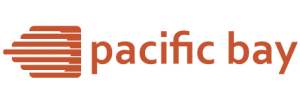Creators in Control: How IPTV Empowers Producers and Publishers
Internet Protocol Television is often presented through the lens of viewers, but its rise also changes the outlook for creators and publishers. Film studios, independent producers, regional stations, sports leagues, and digital-first creators all gain new options when distribution runs over the internet. Those options span production, release windows, audience development, data, and revenue mixes. The question to ask is straightforward: how does internet-based television expand what creators can make, how they can present it, and whom they can reach?
Lower Barriers From Greenlight to Release
Internet delivery reduces the need for a slot on a specific channel at a fixed time. A documentary series that might never fit a traditional grid can premiere online, find an audience, and grow through word-of-mouth and recommendations. Pop-up channels let producers stage a festival of shorts for a month, then archive the best segments for ongoing viewing. The greenlight process benefits because decision-makers can draw on audience data from past releases to justify investment in new, adjacent ideas.
Flexible Windows and Audience Control
Creators can experiment with release windows that reflect the story’s rhythm. A thriller may drop weekly to encourage discussion; a limited series might arrive in one batch. Live events can add companion content that stays available long after the final whistle or closing credits. This flexibility fosters long-tail engagement: viewers discover a series months later, and producers still capture value through subscriptions or ad revenue. Regional rights can be structured with more precision, letting a French series release first in francophone markets and expand with dubbed tracks as demand rises.
Data That Informs, Not Dictates
Aggregated viewing data helps creators refine pacing, episode length, and promotional cuts. Minute-by-minute retention charts reveal where attention dips. Search terms expose unmet interest. Used wisely, this information supports creative choices without squeezing them into a formula. Transparent dashboards shared between platforms and producers build trust and reduce guesswork. Feedback loops become shorter, and projects learn from each other.
Multiple Revenue Paths Reduce Risk
Atlas Pro max Internet Protocol Television supports a mix of subscription tiers, advertising, and pay-per-view events. A youth sports league can stream matches free with ads and sell a premium tier for families who want downloads and replays. A film distributor can offer a rental window before adding the title to a bundle. Branded integrations work better when the ad platform respects frequency caps and context, which protects the viewing experience and keeps the brand halo positive. Diversified revenue lowers reliance on a single big payday and encourages experimentation.
Global Reach With Local Respect
Creators can reach fans beyond borders by offering subtitles, dubbed tracks, and localized artwork. At the same time, geofencing and rights management protect partnerships with local broadcasters. A regional music channel can cultivate a global niche while maintaining domestic sponsorship deals. Festivals can stream select titles to international subscribers, broadening recognition for emerging filmmakers. By designing for both reach and respect, producers grow audiences without alienating local allies.
Community Features Strengthen Loyalty
Live chats with moderators, watch parties, and Q&A sessions turn releases into events. Creators who engage directly with viewers often see higher completion rates and more sharing. These interactions need to feel safe and well-managed, which means clear rules, tools for reporting abuse, and trained staff during big moments. When done well, community features become an asset that rivals cannot copy easily.
Smarter Production and Delivery Workflows
Cloud-based editing, remote collaboration, and file deliveries integrated with streaming platforms shorten production cycles. Teams in different cities can review cuts on secure links, add notes, and publish final versions without shipping drives. On the delivery side, automated quality checks catch audio sync issues and subtitle timing before an episode goes live. These gains reduce costs and let teams spend more time on storytelling.
Sustainability and Access as Creative Commitments
Producers increasingly weigh energy use and accessibility. Efficient encoding, renewable-powered storage, and revised shooting plans that cut travel can shrink a project’s footprint. At the same time, subtitles, sign language interpretations for live events, and descriptive audio tracks broaden reach. These practices expand the audience and align with viewer expectations of responsible media.
The Upshot for Creators
Internet Protocol Television does not guarantee success, but it expands the set of workable strategies. Lower barriers, flexible windows, data with guardrails, diversified revenue, international reach, community tools, and modern workflows add up to a friendlier environment for creativity. Producers who plan with these advantages in mind can build stronger connections with fans and weather the ups and downs of the market. Viewers gain fresher stories and better access, while platforms benefit from a healthier supply of shows worth watching. That is the kind of alignment that keeps a medium growing.


